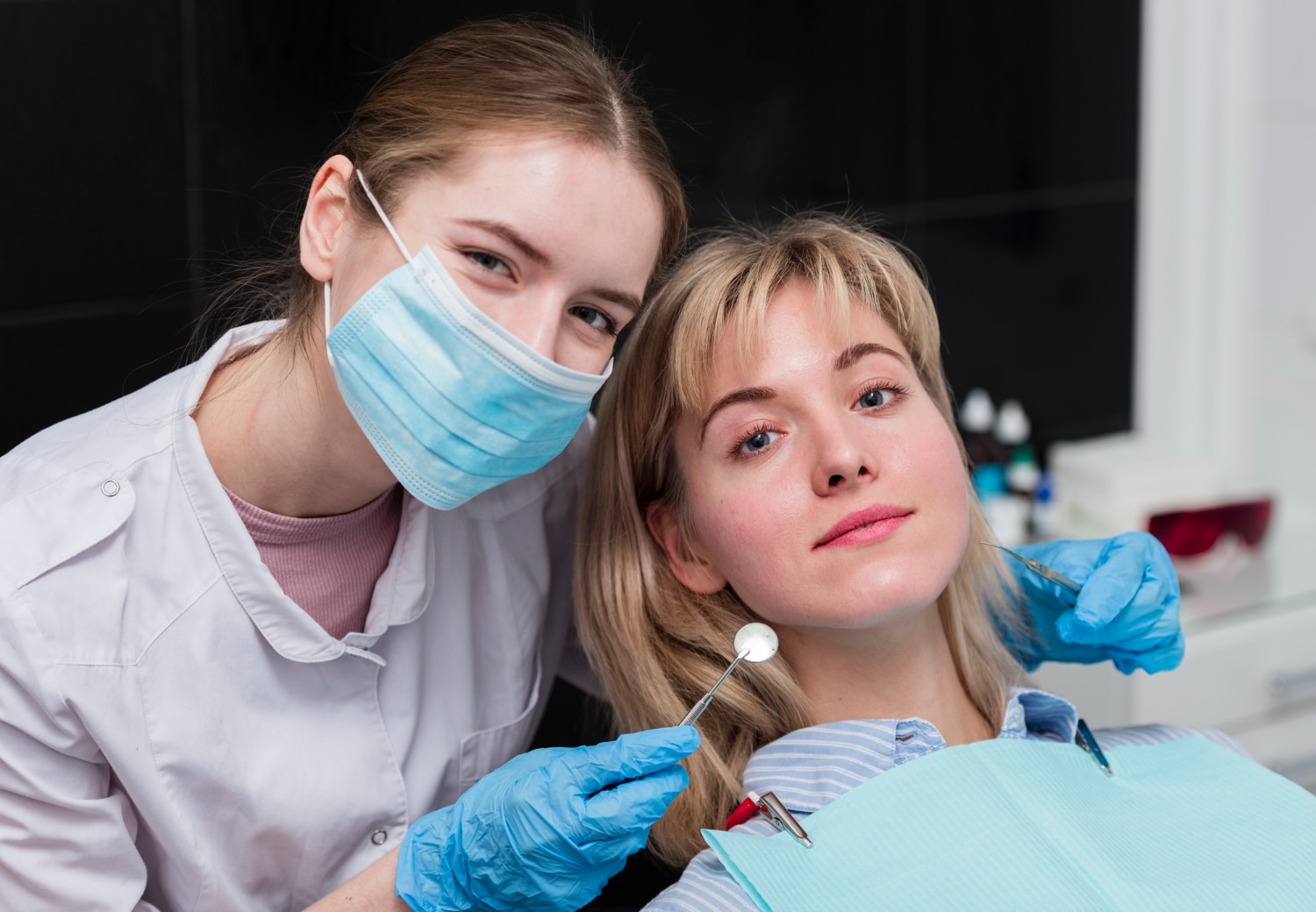Welcome to the ultimate guide to jaw surgery, where we explore the most common types and revision surgeries. If you’re considering jaw surgery or want to learn more about these procedures, you’re in the right place.
Jaw surgery, also known as orthognathic surgery, is a specialized procedure that corrects various issues related to the jaw and facial structure. It is commonly performed to treat conditions such as an underbite, overbite, open bite, or facial asymmetry. This surgery can improve both the function and aesthetics of the jaw, resulting in a boost of self-confidence for many individuals.
Throughout this comprehensive guide, we’ll delve into the most common types of jaw surgery, including genioplasty, upper jaw surgery (maxillary osteotomy), and lower jaw surgery (mandibular osteotomy). We’ll also address revision surgeries, which may be necessary if the initial procedure did not achieve the desired outcome.
Join us as we take an in-depth look into jaw surgery, giving you the knowledge and insights you need to make informed decisions about your oral health and overall well-being. Let’s begin this transformative journey together.
Common Types of Jaw Surgery
One of the most common types of jaw surgery is genioplasty, which focuses on the chin area. Genioplasty can help enhance facial harmony by reshaping the chin to improve overall facial aesthetics. Another type is upper jaw surgery, also known as maxillary osteotomy, which is often done to correct an open bite or to reposition the upper jaw for better alignment. Lower jaw surgery, or mandibular osteotomy, addresses issues with the lower jaw, such as an underbite or asymmetry.
Jaw surgery is typically recommended for individuals with severe jaw misalignment that cannot be corrected with orthodontic treatment alone. The procedure aims to improve the bite, speech, and overall facial balance. During the initial consultation, your oral surgeon will evaluate your condition and discuss the specific goals of the surgery. You may also undergo imaging tests, such as X-rays or CT scans, to help plan the surgical approach.
Reasons for Jaw Surgery
There are various reasons why individuals may opt for jaw surgery. Some common reasons include difficulty chewing or biting, chronic jaw pain, excessive wear on the teeth, speech problems, and sleep apnea. Jaw surgery can also address aesthetic concerns, such as a receding chin or a protruding jaw. By correcting these issues, patients can experience improved facial symmetry, better oral function, and enhanced overall quality of life.
In addition to functional and aesthetic benefits, jaw surgery can have a positive impact on one’s self-esteem and confidence. Many individuals who undergo orthognathic surgery report feeling more comfortable smiling, speaking, and interacting with others after the procedure. By addressing structural abnormalities in the jaw, patients can achieve a more harmonious facial appearance and a healthier bite alignment.

Preparation for Jaw Surgery
Preparation for jaw surgery involves several important steps to ensure a smooth and successful procedure. Your oral surgeon will provide detailed instructions on how to prepare for surgery, which may include guidelines on fasting before the procedure, adjusting medications, and quitting smoking. It’s essential to follow these instructions closely to minimize the risk of complications and promote optimal healing.
During the preoperative phase, you may also meet with your orthodontist to discuss any necessary pre-surgical orthodontic treatment. This may involve wearing braces to align your teeth properly before the surgery. Your orthodontist and oral surgeon will work together to create a comprehensive treatment plan that addresses both the functional and aesthetic aspects of your jaw condition.
The Jaw Surgery Procedure
The jaw surgery procedure is typically performed in a hospital or surgical center under general anesthesia. The duration of the surgery can vary depending on the complexity of the case, but it generally takes a few hours to complete. Your surgical team will ensure that you are comfortable and well-supported throughout the procedure, monitoring your vital signs and adjusting anesthesia as needed.
During the surgery, your oral surgeon will make precise incisions inside the mouth to access the jaw bones. They will then reposition the bones according to the treatment plan, using specialized instruments to secure them in the desired alignment. In some cases, bone grafts may be necessary to enhance stability and promote proper healing. Once the corrections are made, the incisions are carefully closed with dissolvable sutures.
Recovery Process After Jaw Surgery
The recovery process after jaw surgery is a crucial phase that requires patience and commitment to following post-operative instructions. Initially, you may experience swelling, bruising, and discomfort, which can be managed with pain medications and cold compresses. It’s essential to rest and avoid strenuous activities during the early stages of recovery to allow your body to heal properly.
Your oral surgeon will provide detailed guidelines on post-operative care, including instructions on diet modifications, oral hygiene practices, and follow-up appointments. It’s important to attend all scheduled visits to monitor your progress and address any concerns that may arise. As the swelling subsides and your jaw begins to heal, you will gradually notice improvements in your bite function and facial appearance.

Potential Risks and Complications of Jaw Surgery
Like any surgical procedure, jaw surgery carries certain risks and potential complications. These may include infection, bleeding, nerve damage, changes in sensation, and malocclusion. Your oral surgeon will discuss these risks with you during the consultation and provide information on how to minimize them. It’s essential to communicate openly with your surgical team and seek prompt medical attention if you experience any unusual symptoms post-surgery.
While the majority of patients experience successful outcomes with jaw surgery, it’s important to be aware of the potential risks and complications involved. By following your surgeon’s recommendations and attending all follow-up appointments, you can help ensure a smooth recovery and optimal results. Remember that your oral health and well-being are the top priorities, and your surgical team is there to support you every step of the way.
Revision Jaw Surgery: When and Why It May Be Necessary
In some cases, patients may require revision jaw surgery to address persistent issues or achieve further improvements in jaw alignment. Revision surgery may be necessary if the initial procedure did not fully correct the problem or if new issues have developed over time. Common reasons for revision jaw surgery include relapse of jaw misalignment, asymmetry, or dissatisfaction with the aesthetic outcome.
Before undergoing revision jaw surgery, it’s essential to undergo a thorough evaluation with your oral surgeon to determine the underlying cause of the concern. Your surgeon will review your medical history, assess your current jaw condition, and discuss your goals for the revision procedure. By addressing these factors comprehensively, your surgical team can develop a tailored treatment plan to optimize the results of the revision surgery.
Recovery Process After Revision Jaw Surgery
The recovery process after revision jaw surgery is similar to that of the initial procedure, requiring close adherence to post-operative instructions and regular follow-up appointments. You may experience similar symptoms such as swelling, discomfort, and restricted jaw movement following the revision surgery. It’s important to follow your surgeon’s recommendations for pain management, oral hygiene, and dietary restrictions to support proper healing.
During the recovery period, it’s normal to have some concerns or uncertainties about the outcome of the revision surgery. It’s essential to communicate openly with your surgical team and address any questions or issues promptly. By maintaining a positive attitude and staying committed to your recovery plan, you can increase the likelihood of achieving the desired results and enhancing your jaw function and aesthetics.

Conclusion: Achieving Optimal Jaw Health and Functionality
In conclusion, jaw surgery is a transformative procedure that can significantly improve both the function and aesthetics of the jaw and facial structure. By addressing issues such as misalignment, asymmetry, and functional problems, patients can experience enhanced bite function, improved oral health, and increased self-confidence. Whether you’re considering jaw surgery for medical or cosmetic reasons, it’s essential to consult with a qualified oral surgeon to explore your options and make informed decisions about your treatment.
Throughout this comprehensive guide, we’ve explored the most common types of jaw surgery, the reasons for undergoing these procedures, the preparation and recovery processes, as well as the potential risks and complications involved. We’ve also discussed revision jaw surgery and the importance of thorough evaluation and post-operative care to optimize the outcomes of these procedures. Remember that achieving optimal jaw health and functionality is a collaborative effort between you and your surgical team, and by working together, you can achieve the best possible results for your oral health and overall well-being.






